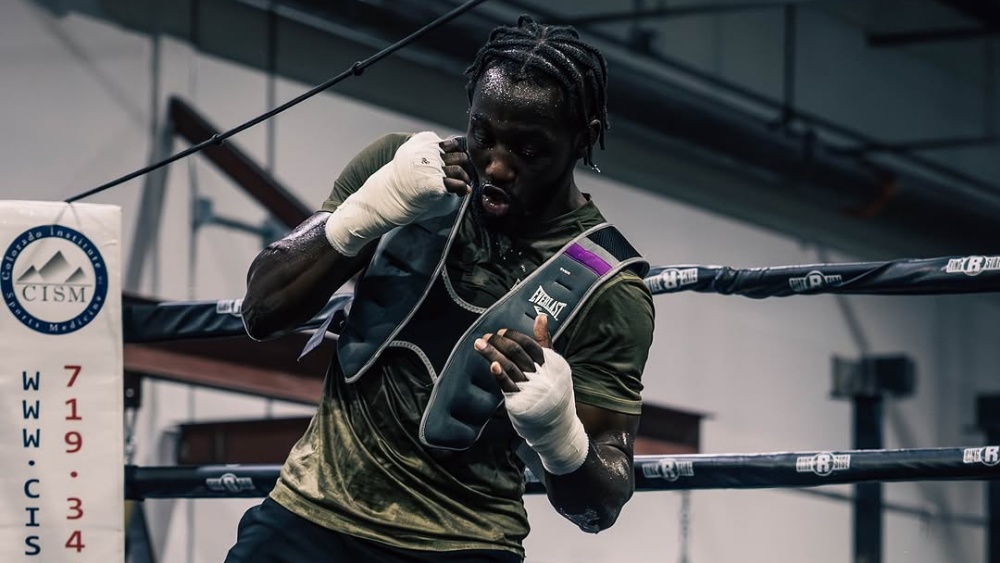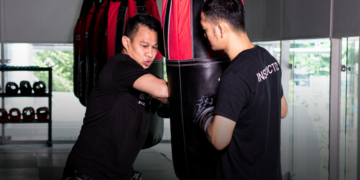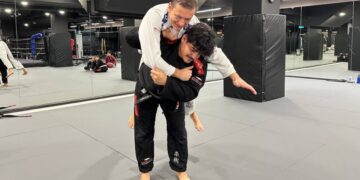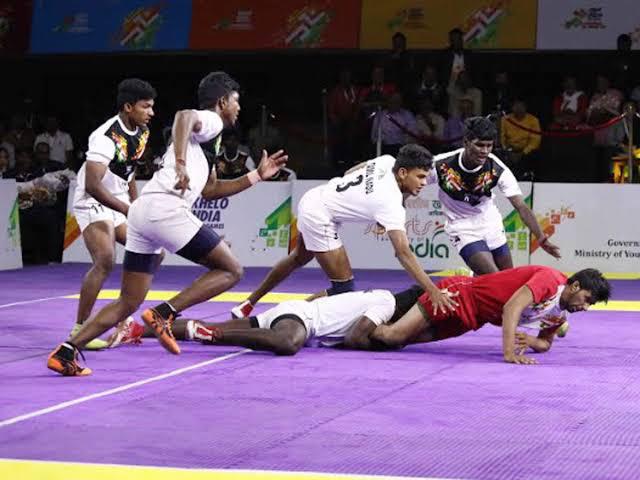
Summary
The uppercut is one of boxing’s most powerful and underrated punches. It travels vertically from underneath your opponent’s guard, targeting the chin or body. While it looks flashy, it’s also one of the most strategic punches, relying on positioning and rhythm.
Thrown correctly, it can slip under an opponent’s guard and turn the tide of a fight. Yet landing it cleanly takes more than raw power; it requires smart setups, timing, and precision.
Whether it’s through feints, jabs, or countering forward pressure, setting up the uppercut makes it unpredictable, and that’s where its power lies.
This article explores seven effective ways to set up the uppercut, helping you add one of boxing’s most technical strikes to your arsenal.
1) Using The Jab To Set Up The Uppercut
The jab is the simplest and most reliable way to prepare your opponent for an uppercut. By throwing jabs consistently, you draw their guard high and forward, opening space underneath for the next punch.
Example:
- Throw two or three light jabs to draw a reaction and a predictable pattern to mask the sneaky uppercut.
- As your opponent reacts, slip inside and throw a rear uppercut or lead uppercut.
- Follow with a hook or cross to complete the combination.
This setup works well both offensively and defensively, especially against opponents who rely heavily on their high guard.
2) Feint The Body Shot
A body feint makes opponents drop their guard, the perfect time to attack upward. Lower your level slightly and feint toward the ribs or stomach, then explode with an uppercut to the chin.
This tactic plays on instinct. The key is to make the feint believable with your eyes and shoulders before switching levels. Done correctly, it’s a classic way to turn defense into offense.
3) Slip And Counter
One of the best ways to land an uppercut is off a defensive movement. When your opponent throws a straight punch, slip to the side of their lead hand and come up with an uppercut from underneath.
Example:
- Your Opponent throws a jab.
- You slip outside, keeping your head off the centerline.
- Fire a lead uppercut immediately after slipping.
This setup is common among counterpunchers and works best when you time the motion precisely rather than forcing it.
4) Use The Lead Hook To Create Space
The lead hook naturally pulls your opponent’s guard to one side, which opens the centerline for the uppercut.
Example:
- Throw a lead hook to the body or head.
- Step slightly to the outside.
- Fire a rear uppercut through the middle.
This is a high-percentage setup often used by even boxers at the highest level to keep their opponent guessing between body and head levels.
5) Step Back and Catch Aggression
Aggressive fighters tend to rush forward with straight punches, leaving their chin exposed. After baiting them with a jab, step back slightly, let them extend, and meet them with an uppercut as they move in.
This setup relies on timing and distance control. It’s particularly effective against pressure fighters or taller opponents who lean forward while punching.
6) Combine Uppercut With Cross Or Hook
Pairing the uppercut with another punch creates a natural flow that hides your intention. Check out the video above to see how Bivol times his uppercut perfectly between combinations.
Some other examples:
- Cross, Lead Uppercut, Cross
- Lead Hook, Rear Uppercut, Lead Hook
These sequences keep your opponent guessing, while the alternating motion generates power from your hips and shoulders.
7) Use Angles To Hide The Uppercut
Footwork can make your uppercut harder to read. Instead of throwing from a fixed position, use pivots or sidesteps to create new lines of attack.
For instance, after slipping or pivoting, throw the uppercut from an off-angle. The punch will arrive from a direction your opponent doesn’t expect, catching them mid-adjustment.
This approach takes practice but pays off by combining movement, timing, and precision in one smooth action.
Common Mistakes When Throwing Uppercuts
- Overextending The Punch: Short, compact movements generate more power and reduce openings.
- Dropping The Opposite Hand: always keep your guard up to protect against counters.
- Standing Too Tall: Bend your knees slightly and use your legs to drive power upward.
- Forcing The Punch: Wait for natural openings instead of throwing blindly. Throwing too many makes the uppercut predictable.
- Losing Balance After Follow-Up: Always ensure you have a firm footing and recover your stance immediately after the punch.
FAQs On Setting Up The Uppercut In Boxing
Q: When Should I Throw The Uppercut?
A: The most common scenario would be when your opponent leans forward, covers up tightly, or throws straight punches. The uppercut is most effective against opponents with a high or compact guard.
Q: Should I Throw It To The Head Or Body?
A: Both work. Head-level uppercuts can disrupt rhythm, while body uppercuts drain energy and lower the guard.
Q: How Do I Avoid Getting Countered?
A: Keep your other hand up and don’t overcommit. Small, quick uppercuts are safer than big, looping ones.
Q: How Do I Increase The Power Of My Uppercut?
A: Work on leg strength, hip rotation, and timing. Power comes from driving upward through your body, not swinging your arm.
Final Thoughts
The uppercut is one of boxing’s most technical yet rewarding punches. It combines precision, timing, and awareness, qualities that define great fighters.
By mastering how to set it up through jabs, feints, and movement, you transform it from a risky strike into one of your most effective tools. With consistent practice, the uppercut becomes more than a punch; it becomes a weapon that turns opportunities into decisive moments.
You may also like:
The Beginner’s Guide To Different Types Of Bags For Boxing And Muay Thai
Summary Training bags have been a cornerstone of striking for decades. They allow athletes to practice timing, precision, and combinations without needing a live partner. In both Boxing and Muay Thai, bags are used not…
Summary You need to learn how to throw punches in bunches if you plan to compete as a boxer. Sure, the first thing you need to focus on when you start boxing training is the…
Summary In Boxing, the beauty of outboxing lies in its precision and adaptability. It’s the art of dictating distance, tempo, and rhythm while forcing your opponent to fight your fight. But mastering outboxing goes beyond…
Summary Footwork is one of the most important yet overlooked aspects of boxing. It determines balance, defense, and the ability to create openings. Two common types of movement used by boxers are parallel and diagonal…
Summary In boxing, stance shapes strategy. Southpaw fighters, those who lead with their right hand and right foot, often appear awkward to their orthodox opponents. Because most boxers are orthodox, the southpaw stance instantly changes…
Summary In boxing, training equipment shapes how a fighter learns and develops. While heavy bags and focus mitts are staples in most gyms, the punch shield has become a favorite among coaches for developing raw…
Summary In Muay Thai, elbows are called sok, and they are both versatile and devastating. They can be thrown from multiple angles, upward, downward, horizontal, and even spinning, making them a key tool in clinch…
Summary The Seoi Nage, also known as the shoulder throw, is one of Judo’s most iconic and widely practiced techniques. The name literally translates to “shoulder throw” (Seoi meaning “to carry on the back,” and…
Summary There’s something powerful about waking up before the world does. The streets are quieter, the air feels lighter, and your mind hasn’t yet been flooded by daily distractions. Training in the morning taps into…
Summary Headline cards come and go, but when a promotion calls an event “the biggest of the year,” you pay attention. ONE 173: Superbon vs. Noiri lives up to that promise, a stacked lineup packed…
Summary Eating healthy doesn’t have to mean giving up your favorite foods or surviving on bland salads. With the right balance of nutrients and flavor, you can enjoy satisfying lunches that help you stay full,…
The teep, also known as the push kick, is one of the most versatile weapons in Muay Thai. It’s often called the “jab of the legs” because of how effectively it controls distance, disrupts rhythm,…



































